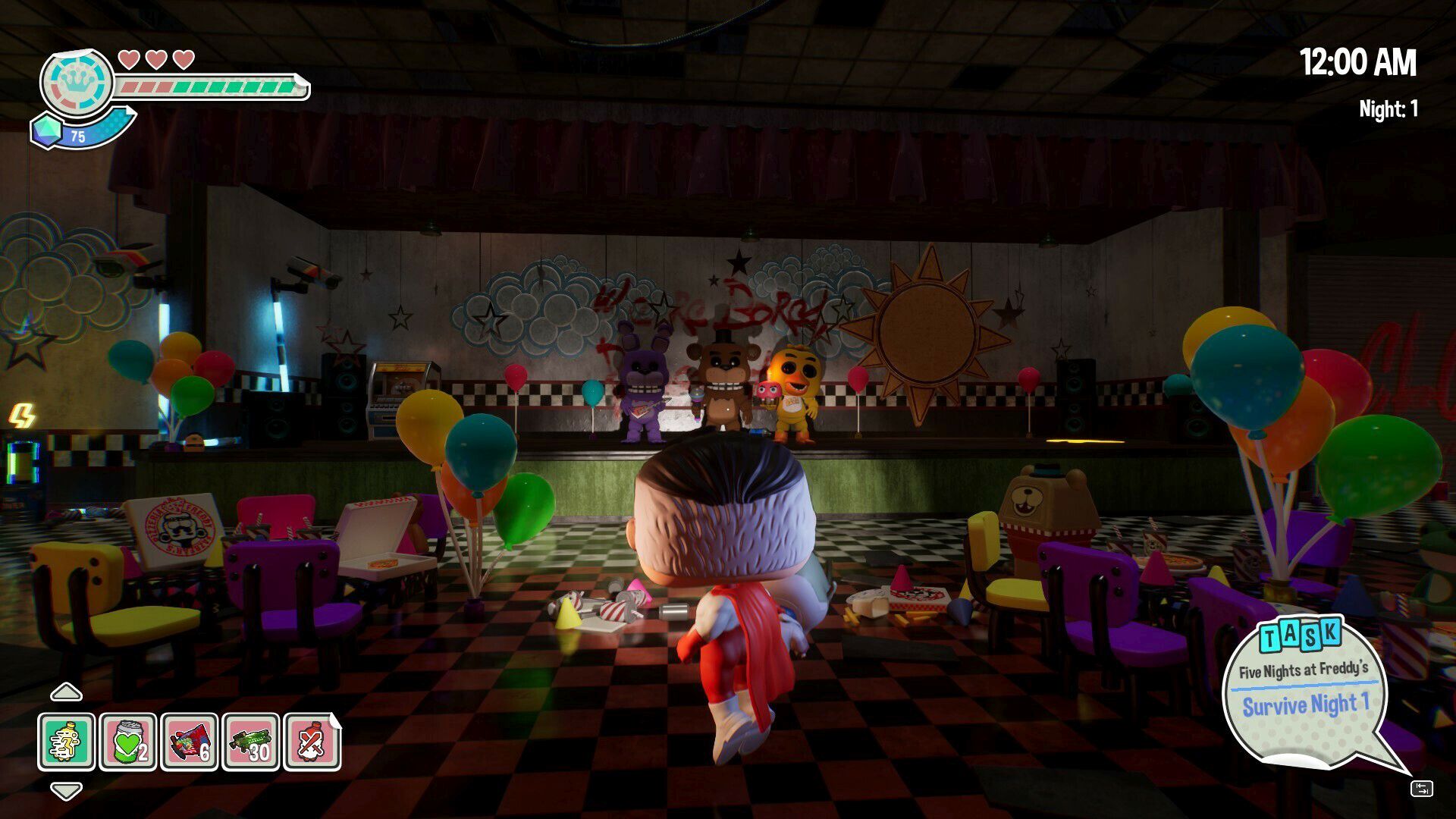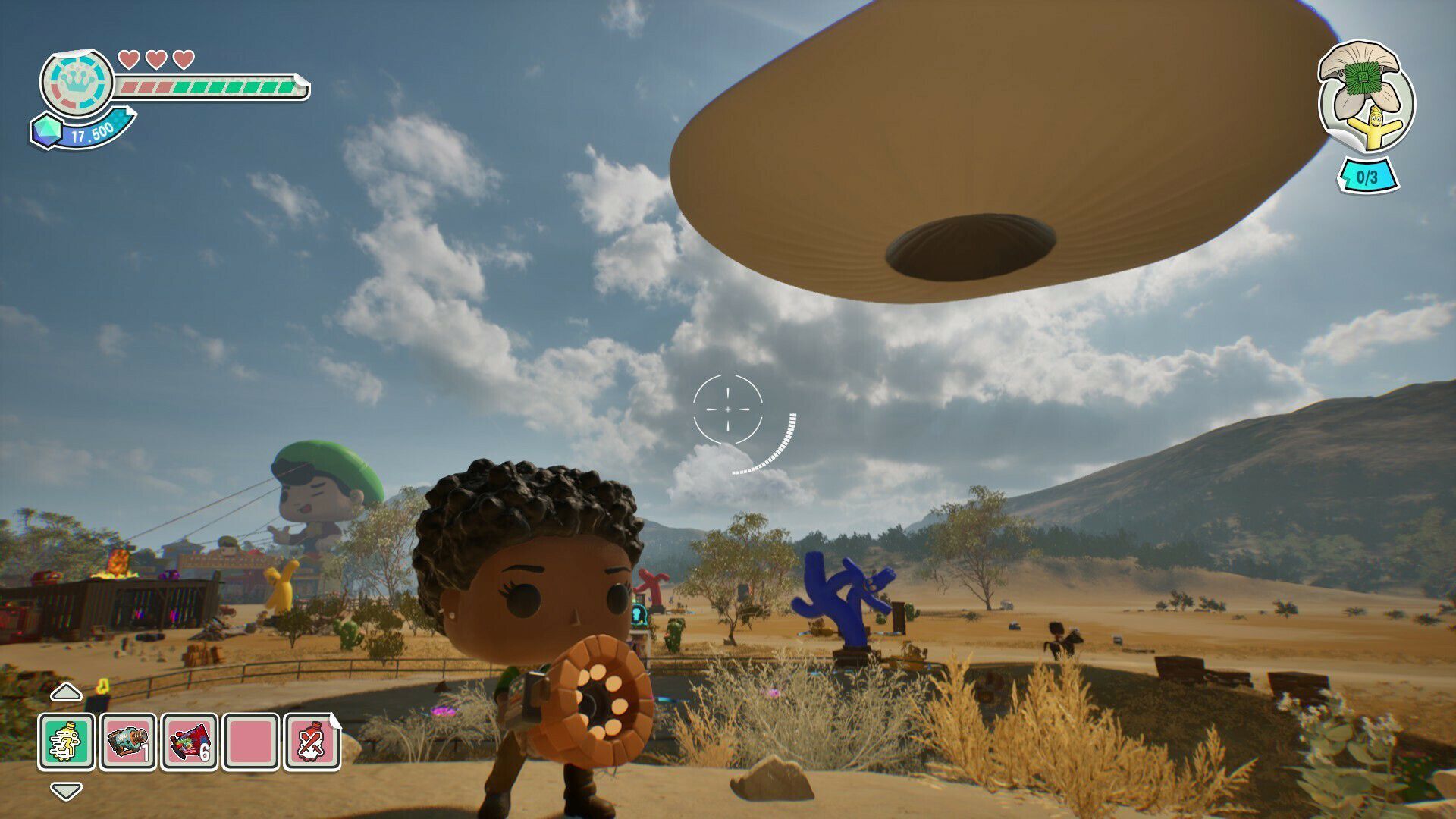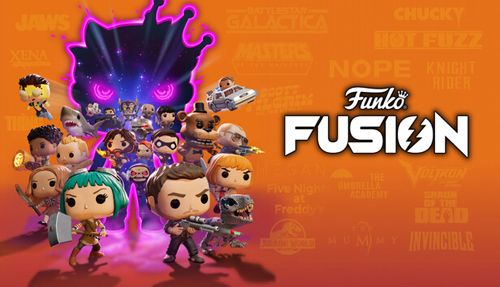Funko Fusion Review
True confession time. I don’t own a single Funko Pop! figure. Sure, I have shelves groaning with the weight of pop culture and gaming memorabilia, action figures, and toys but no hermetically sealed special edition Funko bobbleheads. I am, alas, a very bad nerd. Still, while I might not collect the figures, I admire the depth and breadth of Funko’s desire to capture the icons of entertainment in plastic form. By a mile, what’s best about Funko Fusion is its Lego-like embrace of everything popular.
Funko and the Multiverse
Funko Fusion is a third-person action game based on dozens of iconic Funko Pop! figures from movies and television. The narrative is less of a story than a premise. Freddy Funko is attacked by evil Funko mastermind Eddy. To defeat Eddy, the player has to collect seven crowns, each hidden in a different world, and bring them back to Funko HQ. Got it? Ok, go!
I guess there’s a little more to the story, but not much, and it doesn’t matter. What’s important is that the narrative is an excuse for diving into seven unique worlds. They include worlds based on Masters of the Universe, The Thing, Jurassic World, Battlestar Galactica, Scott Pilgrim Vs. The World, The Umbrella Academy, and Hot Fuzz. This array of pop culture touchpoints strongly suggests that despite its colorful style, Funko Fusion isn’t for kids. That’s borne out by some pretty violent (though not realistically gory) moments. There’s something for everyone in the mix of worlds.

Although not built on bricks, Funko Fusion’s art direction has the same colorful, stylized realism as the Lego video games. The worlds are varied, authentic to the source material, and crammed with references, secrets, and jokes. They honestly look impressive and fans of each film will find lots to appreciate. Although there’s something incredibly meta or circular about a game built on toys exploring the world of He-Man, itself a cartoon world that was just an excuse to sell toys.
One difference between animated Legos and Funko Pop! characters is the latter’s lack of expression. The big, black, blank eyes just don’t carry much emotional range. Since there’s almost no voice acting, the dialogue is text-based, accompanied by some squeals, grunts, and other vocal noises. Like the story itself, the writing is about as good as it needs to be but rarely really clever or witty.
What’s Behind Door #1?
After the introductory level and first boss, players are sent to whichever world they’ve chosen. The order doesn’t matter, because they all need to be completed. Within each world, players can switch between a handful of characters, each with different abilities, but the flow of action doesn’t really change much. Each world has five levels and a final boss. The bosses themselves are almost all of the “do other stuff to weaken the boss” variety. With only a few exceptions, combat keeps up a steady pace and the player faces off against multiple enemies almost constantly. Some puzzle-solving or detective work occasionally provides some brief downtime.

Combat becomes incredibly repetitive long, long before the end credits. Many of the game’s mechanics for weapons switching and healing are slow and very awkward. For example, to heal, you need to find a machine that can “print” a healing or other consumable item. It’s far from an instant process, and all the while enemies continue to spawn in and attack. This interrupts the printing process. I-frames? No such thing. Character animations, movement, dodging, and jumping are smooth and well done but quite a few mechanics aren’t well explained, leading to trial, error, and even more repetition. Having to consult an NPC about how to beat a boss while being pummeled by said boss isn’t great game design.
Combat mechanics might not be your cup of tea but they’re intentional. Unintentional are the game’s bugs, characters getting stuck in the scenery, and player actions that break scripted events. I didn’t experience any outright crashes but those little things add up.

Wobbly, Bobbly, and Meh
There’s no getting around the feeling that Funko Fusion springs from the same genre gene pool as the Lego video games. Visually, the game is a treat and the levels effectively reference their source material. Funko Fusion isn’t without humor or clever touches, but its combat is excessively repetitious and fused to some awkward, fun-killing mechanics. Underneath those bobbleheads are the bones of a good game that never quite reaches the surface.
***PS5 code provided by the publisher for review***
The Good
- Colorful and impressive worlds
- Characters look like the toys
- Lots of fun cultural references
- Substantial length
The Bad
- Boring and repetitive combat
- Awkward mechanics
- Bugs
- Poorly paced

